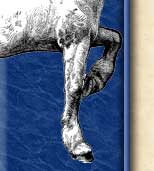 
|
Issues associated with safety and horses, offers a wide range of challenges to many current competitors and owners. One of the most frequent areas of safety and insurance liability issues is in the rental and loan of a horse for recreational riding. The key issue associated with these incidents is negligence on the part of the owner, renter, or lessee. Determination of negligence is critical, and thus understanding some necessary protocols is necessary at the time of the incident. Working with horses poses certain inherent physical risks, when one considers the fact of an animal the size and weight of a horse. For example, a female rider may average 135 pounds in control of a 1,200 pound horse. With the size and power of this horse the rider/handler has the potential for extreme injury if the rider/handler is not properly trained to manage the horse, following traditional safety guidelines.
The arena horses are ridden or driven in need to have proper footing to prevent and reduce hoof slippage and falls. Arenas with unsafe surfaces must be adjusted to permit horses, or removed from assess, regardless of the consequences, as safety needs to be a top priority. Approved hardhats should be worn to prevent injuries to the head in the case of falls or injuries caused by the horse. In today’s western competitions, the use of approved safety helmets is recommended but not required. Yet, there are many different breeds shown English, without the use of approved safety helmets. Youth should always be encouraged and required to wear approved safety helmets. Camp and youth riding programs need to place a strong emphasis on teaching safety, both on the horses back and while handling the horse on the ground. Safety needs to be the primary lesson when introducing the new rider/driver/handler to the horse. All horses used in rental/camp riding programs need to test ridden to assess their abilities and rider suitability, with the elimination of all unfit horses. Those participating in the sport of horse riding and driving need to verify the availability of professional limited liability protection under their state’s legal statues. Let’s Go and Grow®
Contact Us Hipsley & Associates, LLC
© 2010 Hipsley & Associates. All Rights
Reserved
Home
|
Animal Welfare
|
Appraisals |
Buyer/Seller |
Contracts |
Equestrian Competitions
|
||||

 Safety
checks of all horse equipment must be conducted on a regular basis to
prevent unnecessary accidents from occurring. Checking saddles for the
strength in girth and stirrup leathers, and bridles for worn and fragile
stitching.
Safety
checks of all horse equipment must be conducted on a regular basis to
prevent unnecessary accidents from occurring. Checking saddles for the
strength in girth and stirrup leathers, and bridles for worn and fragile
stitching.